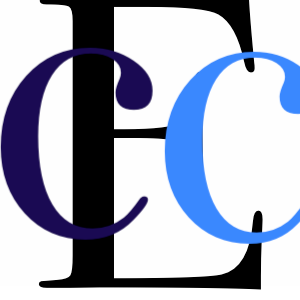
Product Development: A Data Driven, Prototyping Approach
I am a strategic product manager who knows when and how to leverage technology and data to drive impactful outcomes. My expertise lies in aligning teams, defining clear product visions, and executing roadmaps that deliver real value to customers and the business. I am skilled at distilling complex details into a clear, actionable vision that unifies teams around a shared goal. My focus on clarity and strategic direction ensures that teams are always aligned, moving forward efficiently, and delivering impactful results.
By leveraging data as a compass and embracing prototyping as a tool for discovery, I drive innovation through iterative cycles, customer insights, and strategic resource allocation.
My approach ensures that every product decision is backed by actionable intelligence and delivers meaningful outcomes:
Leveraging Data to Drive Decisions
Data is the foundation of my product strategy. I track key product metrics such as user engagement, memberships, Monthly Active Users (MAU), Daily Active Users (DAU), conversion rates, customer retention, and revenue to ensure that products meet user and business needs. By combining data analytics with feedback from partners and customers, I identify pain points, prioritize features, and deliver impactful solutions.
Starting Small and Scaling Effectively
Prototyping plays a critical role in my process. It allows teams to test hypotheses, refine solutions, and validate ideas before committing resources. Starting with small, focused iterations ensures scalable, high-impact outcomes.
Ideating at the Problem Level
My approach to ideation begins with defining the problem, not just generating ideas. This structured methodology asks:
What are the problems we are trying to solve?
What ideas will best address them?
By focusing on the problem first, solutions are always intentional and aligned with user needs.
Managing Capacity Intentionally
Understanding organizational constraints and opportunities is key to managing team and resource capacity. By intentionally allocating capacity and saving space for discovery, I enable teams to meet immediate needs while advancing long-term goals.
Upholding DevOps Practices
I integrate DevOps practices to ensure that solutions are compliant, secure, and built to scale seamlessly. This approach reduces risks, accelerates delivery, and ensures operational excellence.
Aligning OKRs with Productivity
OKR planning often suffers from a disconnect between strategy and execution. I ensure that product initiatives are directly tied to business goals, creating clear connections that drive productivity and deliver measurable value.
Continuous Improvement
At the heart of my approach is a commitment to continuous improvement. Through regular evaluation and iteration, I foster a culture of learning and refinement, ensuring that every product and process evolves to meet changing needs.
Voice of the Customer
I prioritize collecting and amplifying customer feedback, ensuring it is directly leveraged to improve the product and simplify the user experience. This commitment to understanding and advocating for the customer ensures that every product decision aligns with their needs and expectations.
By starting small, scaling effectively, and making decisions grounded in data, I’ve consistently delivered products that create value for users and stakeholders alike. Whether it’s leading a large-scale migration, refining an MVP, or driving alignment across teams, my focus remains on building easy to use products that inspire, innovate, and impact.
Innovation First
Great product management is more than delivering solutions—it’s about creating meaningful experiences that empower users and achieve impactful results.
My approach to product management blends proven frameworks, customer empathy, and a relentless focus on execution to drive innovation:
1. Cultivating a Bold Vision
Every transformative product starts with a bold vision. By defining clear goals that challenge conventional thinking, I ensure the team’s efforts align with both user needs and organizational objectives. Using frameworks like Now-Next-Later roadmaps, theme based roadmaps and OKR alignment, I craft strategies that inspire and drive progress.
2. Obsessing Over Customer Experience
Customer-first thinking is at the core of every decision I make. By leveraging approaches such as User Persona definition, User Journey Mapping, and Customer Feedback Analysis, I dive deep into understanding what truly matters to users. This approach ensures that products solve the right problems and delight users.
3. Relentlessly Pursuing Simplicity
Simplifying complexity is an art. I use principles from Lean Product Management and Agile Scrum Metholodogies to strip away unnecessary features, ensuring that products focus on delivering value. This means prototyping, iterating quickly, testing assumptions, and refining until only what truly matters is delivered.
4. Bridging Technology and Design
Innovation thrives at the intersection of technology, design, and business strategy. Through frameworks like Human-Centered Design and Continuous Discovery/Continuous Delivery dual tracks, I foster collaboration between disciplines, ensuring that solutions are as functional as they are impactful.
5. Taking Calculated Risks
Innovation demands boldness and the courage to step into the unknown. By applying Experimentation Frameworks and Rapid Prototyping, I balance bold moves with iterative learning. These frameworks allow me to test concepts, gather insights, and refine solutions before scaling.
6. Fostering a Culture of Excellence
High-performing teams deliver high-performing products. Through frameworks like OKR Alignment and Agile Scrum Ceremonies (standups, retrospectives, etc.), I cultivate an environment of transparency, accountability, and shared purpose. This empowers teams to deliver their best work consistently.
7. Using Constraints to Drive Creativity
Constraints—whether time, budget, or technical—can unlock creativity. I apply principles from Sprint Planning and Dependency Mapping to navigate limitations while encouraging innovative solutions that maximize resources.
8. Mastering Storytelling
Great products need great narratives. Through frameworks like Problem-Solution Narratives and Customer-Centric Framing, I communicate the value of a product in a way that inspires stakeholders and resonates with users.
9. Staying Ahead of Trends
Anticipating change is essential in a fast-paced world. By leveraging Technology Scouting and Trend Analysis, I stay informed on advancements in technology like AI, IoT, and XR/AR/VR, identifying opportunities to deliver cutting-edge solutions.
10. Balancing Vision with Execution
Execution turns vision into reality. Using frameworks like Backlog Prioritization and Roadmapping, I ensure resources are allocated effectively, timelines are met, and every detail reflects the product’s intended experience.
11. The ultimate innovator in product development?
Steve Jobs’ product management theories and practices are legendary, and they reflect his core belief in creating exceptional products that delight users and solve real problems. His famous principle was: “Start with the customer’s experience and work backward to the technology.” This is where I start.
